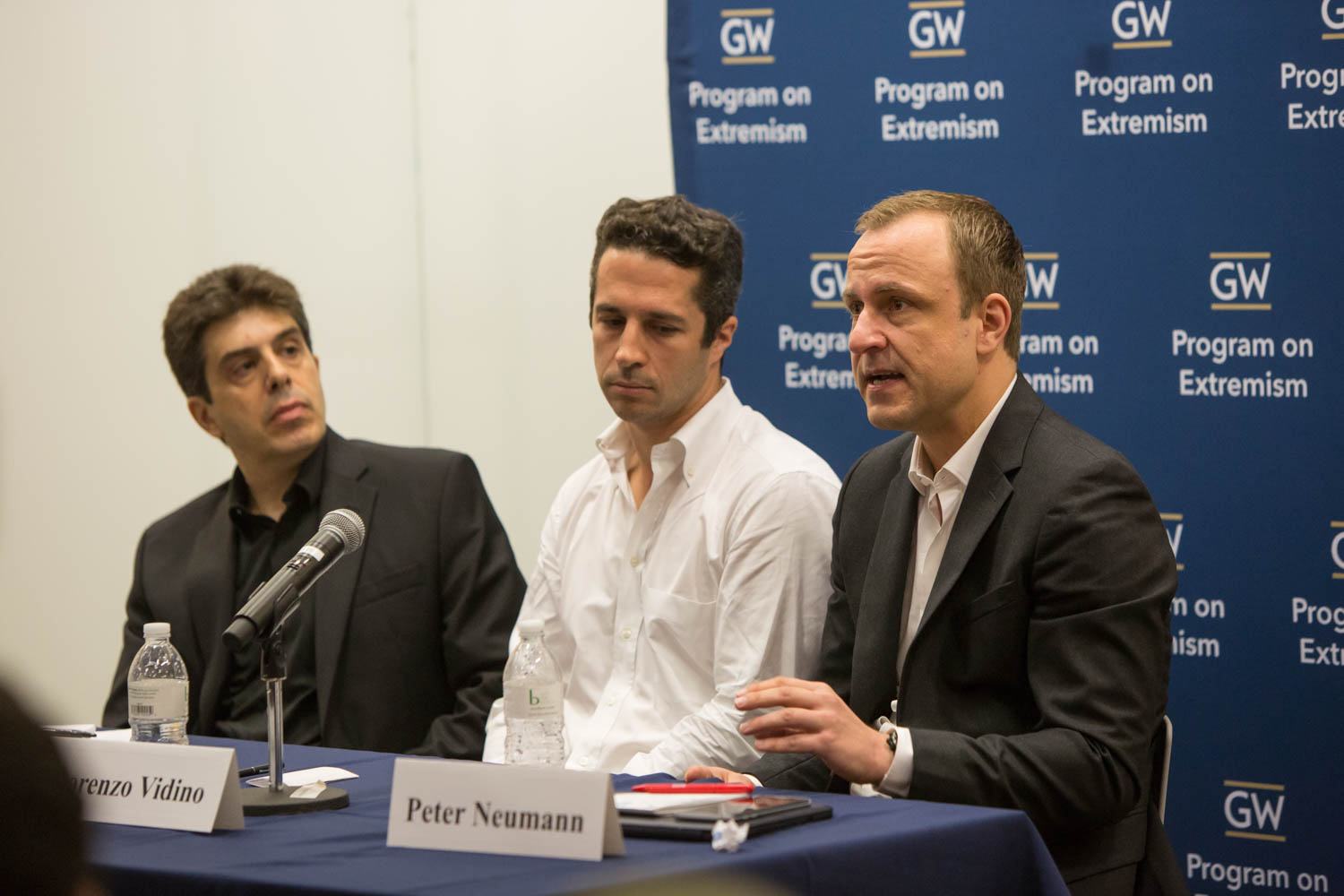By Ruth Steinhardt
Terrorism in 2016 is “unprecedented in its size, spread and savagery,” ProPublica journalist Sebastian Rotella told an audience at a panel hosted by the George Washington University’s Program on Extremism.
It has been “an exhausting and demoralizing couple of years” for counterterrorism professionals, Mr. Rotella said at the panel last Tuesday, titled “From Paris to Orlando: Comparing the Terrorist Threat in Europe to the U.S.”
The panel also included Peter Neumann, director of the International Centre for the Study of Radicalisation, and Program on Extremism Director Lorenzo Vidino.
“Rigorous journalists try to resist the temptation to make a story bigger than it is, but it’s true that the threat—particularly in Europe—is at unprecedented level,” Mr. Rotella said.
Two days later, on the night of July 14, a delivery driver plowed a 19-ton truck into crowds of Bastille Day celebrants in the French Riviera town of Nice, killing 84 people.
That attack came almost exactly a month after a gunman killed 49 at a gay nightclub in Orlando.
Neither perpetrator appears to have directly affiliated with a terrorist organization, although the Islamic State has claimed responsibility for inspiring both.
That ability to mobilize without making direct contact makes organizations like the Islamic State significantly more dangerous and chaotic than other terrorist organizations such as Al Qaeda, panelists agreed.
Potential radicals need not travel to conflicts like the one in Syria, Dr. Vidino said, because ISIS aims to empower individuals to act on their own.
“The message coming from [the Islamic State] is that you can carry out jihad back home in the West,” he said.
While Al Qaeda screened their recruits and were “discriminate” about what they would and would not publicize, Mr. Rotella said, the Islamic State “has no redlines.”
“Crime and extremism are blurring together like never before,” Mr. Rotella said. Many perpetrators in the attacks on Brussels in March and in Paris in November 2015 had criminal backgrounds and connections to organized crime, through which they obtained their weapons, he said.
“One suspect told interrogators, ‘I’m not interested in Islam, I’m just interested in jihad’—which shows a profound ignorance of both concepts,” Mr. Rotella said.
Mr. Neumann agreed, saying the Islamic State promotes itself essentially as “a sort of gangster movie” through which some criminals can find a “redemption narrative.”
“They are conscious of what they’ve done and are now trying to use those [criminal] skills to do what they believe is a good thing,” he said.
The killers’ disparate backgrounds and motives, inasmuch as they can be known, are typical of the new extremist landscape, Dr. Vidino said.
Radicalized fighters have “astonishingly heterogeneous backgrounds,” he said at the panel.
In a follow-up interview after the Nice attack, Dr. Vidino said perpetrator Mohamed Lahouaiej Bouhlel “is typical of the profile in that, to some degree, there is no profile.”
Sometimes, Dr. Vidino said, ideological motives are difficult to distinguish from personal ones. Organizations like the Islamic State can provide a narrative into which disaffected individuals insert themselves.
“We’ve seen cases where an individual is clearly on the path of committing suicide, and they do it in a way that is political,” Dr. Vidino said. He pointed to the case of a suicidal man who set his own car on fire near an Italian synagogue.
Mr. Bouhel was involved in at least one violent altercation before the Nice attack and was estranged from his wife.
“Sometimes you have a hybrid motivation,” Dr. Vidino said. “One doesn’t exclude the other.”


